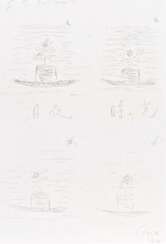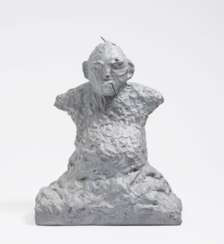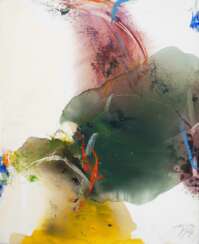джуна

Nam June Paik (Korean: 백남준) was a Korean American artist. He worked with a variety of media and is considered to be the founder of video art. He is credited with the first use (1974) of the term "electronic super highway" to describe the future of telecommunications.


Nam June Paik (Korean: 백남준) was a Korean American artist. He worked with a variety of media and is considered to be the founder of video art. He is credited with the first use (1974) of the term "electronic super highway" to describe the future of telecommunications.


Nam June Paik (Korean: 백남준) was a Korean American artist. He worked with a variety of media and is considered to be the founder of video art. He is credited with the first use (1974) of the term "electronic super highway" to describe the future of telecommunications.


Nam June Paik (Korean: 백남준) was a Korean American artist. He worked with a variety of media and is considered to be the founder of video art. He is credited with the first use (1974) of the term "electronic super highway" to describe the future of telecommunications.
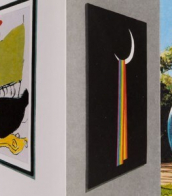

Nam June Paik (Korean: 백남준) was a Korean American artist. He worked with a variety of media and is considered to be the founder of video art. He is credited with the first use (1974) of the term "electronic super highway" to describe the future of telecommunications.
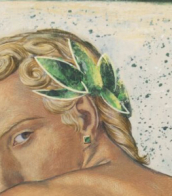

Nam June Paik (Korean: 백남준) was a Korean American artist. He worked with a variety of media and is considered to be the founder of video art. He is credited with the first use (1974) of the term "electronic super highway" to describe the future of telecommunications.


Jun Hasegawa is a contemporary Japanese artist based in the UK.


Jun Hasegawa is a contemporary Japanese artist based in the UK.


Nam June Paik (Korean: 백남준) was a Korean American artist. He worked with a variety of media and is considered to be the founder of video art. He is credited with the first use (1974) of the term "electronic super highway" to describe the future of telecommunications.


Nam June Paik (Korean: 백남준) was a Korean American artist. He worked with a variety of media and is considered to be the founder of video art. He is credited with the first use (1974) of the term "electronic super highway" to describe the future of telecommunications.


Jun Hasegawa is a contemporary Japanese artist based in the UK.


Jun Hasegawa is a contemporary Japanese artist based in the UK.


Nam June Paik (Korean: 백남준) was a Korean American artist. He worked with a variety of media and is considered to be the founder of video art. He is credited with the first use (1974) of the term "electronic super highway" to describe the future of telecommunications.


Nam June Paik (Korean: 백남준) was a Korean American artist. He worked with a variety of media and is considered to be the founder of video art. He is credited with the first use (1974) of the term "electronic super highway" to describe the future of telecommunications.


Kim En Joong is a South Korean Dominican priest, painter, stained glass artist and renowned artist.
Representing abstract landscape painting, his non-figurative canvases, nourished by new technical notions of space and perspective, impose a change of scenery, the starting point of a quest for divine mystery.
In his pictorial works, what is striking is the impression of "liquidity" or "fluidity" of the pigments used. Thanks to delicate, pure and clear colours, Kim En Joong creates a fairytale-like spectacle by playing on the liveliness of the tones and the subtle contrasts.


Nam June Paik (Korean: 백남준) was a Korean American artist. He worked with a variety of media and is considered to be the founder of video art. He is credited with the first use (1974) of the term "electronic super highway" to describe the future of telecommunications.
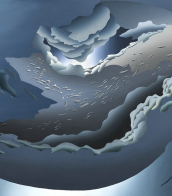

Nam June Paik (Korean: 백남준) was a Korean American artist. He worked with a variety of media and is considered to be the founder of video art. He is credited with the first use (1974) of the term "electronic super highway" to describe the future of telecommunications.


Nam June Paik (Korean: 백남준) was a Korean American artist. He worked with a variety of media and is considered to be the founder of video art. He is credited with the first use (1974) of the term "electronic super highway" to describe the future of telecommunications.


Nam June Paik (Korean: 백남준) was a Korean American artist. He worked with a variety of media and is considered to be the founder of video art. He is credited with the first use (1974) of the term "electronic super highway" to describe the future of telecommunications.


Nam June Paik (Korean: 백남준) was a Korean American artist. He worked with a variety of media and is considered to be the founder of video art. He is credited with the first use (1974) of the term "electronic super highway" to describe the future of telecommunications.


Nam June Paik (Korean: 백남준) was a Korean American artist. He worked with a variety of media and is considered to be the founder of video art. He is credited with the first use (1974) of the term "electronic super highway" to describe the future of telecommunications.


Nam June Paik (Korean: 백남준) was a Korean American artist. He worked with a variety of media and is considered to be the founder of video art. He is credited with the first use (1974) of the term "electronic super highway" to describe the future of telecommunications.


Nam June Paik (Korean: 백남준) was a Korean American artist. He worked with a variety of media and is considered to be the founder of video art. He is credited with the first use (1974) of the term "electronic super highway" to describe the future of telecommunications.


Nam June Paik (Korean: 백남준) was a Korean American artist. He worked with a variety of media and is considered to be the founder of video art. He is credited with the first use (1974) of the term "electronic super highway" to describe the future of telecommunications.


Nam June Paik (Korean: 백남준) was a Korean American artist. He worked with a variety of media and is considered to be the founder of video art. He is credited with the first use (1974) of the term "electronic super highway" to describe the future of telecommunications.


Nam June Paik (Korean: 백남준) was a Korean American artist. He worked with a variety of media and is considered to be the founder of video art. He is credited with the first use (1974) of the term "electronic super highway" to describe the future of telecommunications.

